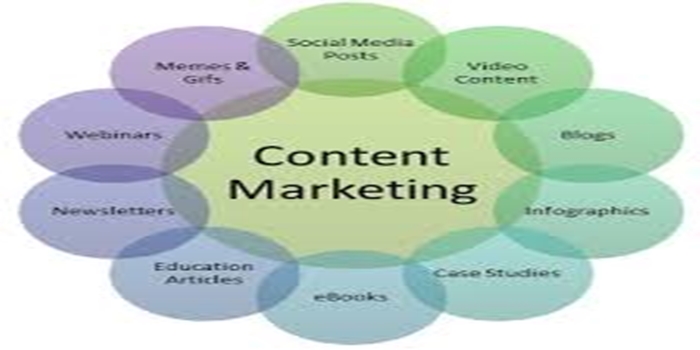In this article, we explained the meaning of content marketing, furthermore we outlined their examples and also their benefits.
Definition
Content marketing is the creation and distribution of valuable, relevant, and consistent content to attract and retain a clearly defined audience to drive profitable customer action.
Content marketing is a type of marketing that involves the creation and sharing of online material (such as videos, blogs, and social media posts) that does not explicitly promote a brand but is intended to stimulate interest in its products or services.
“Social media is an integral part of content marketing”
The Features of Content Marketing include:
Creating educational, entertaining, or helpful content for your target audience. This could include blog posts, videos, podcasts, infographics, ebooks, case studies, guides, etc.
Distributing that content through owned platforms like your website, blog, and social media channels and earning placements on other sites and channels.
Using content to build meaningful connections with your audience to build awareness, engagement, trust, and loyalty.
Positioning your business as a helpful resource for your audience rather than constantly promoting your products or services. Providing value upfront to establish that credibility.
Focusing on relevance and consistency over the volume of content produced. Quality and engagement is vital.
The Benefits of Content Marketing:
- Increased Consumer Power
Today’s consumers have more access to information and more power over buying decisions than ever. As a result, traditional interruptive marketing techniques like cold-calling, TV ads, sales emails, etc. are becoming less and less effective.
In contrast, content marketing meets consumers where they are in their buying journey by providing educational and helpful information. This helps brands make emotional connections and establish trust with prospects over time.
- Supports All Stages of the Buyer’s Journey
High-quality content tailored to the various stages of the customer journey generates more leads and conversions over time.
Whether prospects are in the awareness, consideration, or decision stage, targeted content helps address their questions and concerns to progress them toward a purchase. Educating consumers builds authority and trust.
- Improves SEO & Discoverability
Strategic content creation with SEO (search engine optimization) in mind increases visibility, improves your rankings in search engines like Google, and helps brands get discovered by more prospects online.
Optimized SEO content like blog posts, explainer videos, and visuals targeting relevant topics and keywords drive more qualified website traffic. This is the best type of traffic, and since it matches the user intent, it converts at a higher rate than a regular landing page.
- Builds Loyal Brand Supporters
Consistently providing value to customers beyond the initial purchase kinds loyalty. Brands that focus solely on acquisition often have poor retention.
In contrast, content marketing fosters emotional connections between customers and brands over time. This drives higher customer lifetime value (LTV), referrals, repeat sales, and reduced mix.
Here are Some Examples of Content Marketing:
Blog Posts:
A company might publish a blog with articles offering industry insights, tutorials, or product updates to establish thought leadership and attract potential customers.
Videos:
Creating and sharing informative or entertaining videos on platforms like YouTube or Vimeo can build brand awareness and engage viewers.
Social Media Posts:
Sharing engaging content on social media platforms like Instagram, Facebook, or X (formerly Twitter) can help build a community and drive traffic to a website.
Podcasts:
A company can host a podcast to share expert knowledge, interview industry leaders, or discuss relevant topics with their audience.
Infographics:
Visualizing complex data or information through infographics can make it easier for audiences to understand and share.
Email Marketing:
Sending out newsletters or promotional emails can nurture leads, announce new products, or share valuable content with subscribers.
Case Studies:
Sharing real-world examples of how a company’s products or services have helped customers can build trust and credibility.
User-Generated Content:
Encouraging customers to create and share their own content, such as reviews, testimonials, or social media posts, can amplify brand reach.
Webinars:
Hosting online webinars or virtual events can allow companies to share knowledge and engage with their audience in real-time.
eBooks and Guides:
Creating downloadable eBooks or guides can provide valuable information and capture leads in exchange for email addresses.
Interactive Content:
Creating quizzes, calculators, or other interactive tools can engage users and provide a unique experience.
Original Research:
Conducting and publishing original research can establish a company as a thought leader in its industry.
Influencer Marketing:
Partnering with influencers to promote a brand or product can reach a wider audience.
Conclusion
Content marketing is a marketing strategy used to attract, engage, and retain an audience by creating and sharing relevant articles, videos, podcasts, and other media. This approach establishes expertise, promotes brand awareness, and keeps your business top of mind when it’s time to buy what you sell.


